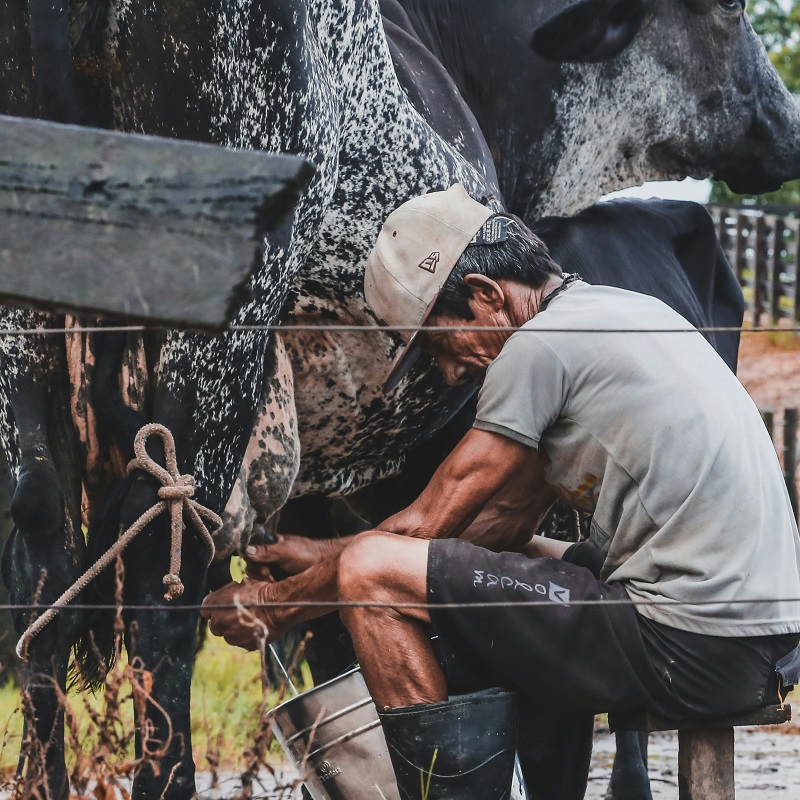
The US Department of Health and Human Services (HHS) and the US Department of Agriculture (USDA) have taken further steps to protect farm workers against the outbreak of the H5N1 virus that is affecting dairy cattle. Although the Centers for Disease Control and Prevention (CDC) continues to assess that the risk to the general public is low, farmworkers who work “closely with infected animals” are at a higher risk of infection.
The organizations are focusing on keeping communities healthy, safe and informed in response to the avian influenza outbreak in dairy cattle.
Some measures the US government has taken to enhance public safety include a US$93 million cash injection for health surveillance, Personal Protective Equipment (PPE) for farmworkers, timely virus analysis to contain the spread, social media awareness and safety guidance for dairy farm and slaughterhouse employees.
“If farm workers or others with contact to infected animals are feeling sick, or exposed to livestock are in need of PPE, they should contact their state health department for assistance,” says the HHS.
Symptoms of infection include cough without fever and eye discomfort with watery discharge.
CDC data indicates 96,565,226 wild birds have been detected with the virus (as of May 30, 2024) along with 79 dairy herds (as of June 3, 2024). Nine states have seen outbreaks in cows, while 48 reported poultry infections.
Human infections
According to the CDC, there have been four reported human cases in the US since 2022 — three from exposure to dairy cows (reported between April 1, 2024 and May 29, 2024) and one from exposure to poultry (reported on April 28, 2022). Two cases were in Michigan, one in Texas and one in Colorado (2022).
None of the three recent cases are associated with the others, and the impacted persons are dairy farm workers exposed to infected cows.
According to the CDC, avian influenza Type A viruses (bird flu viruses) “do not normally infect people,” but rare cases of human infection have occurred with some bird flu viruses. For instance, the first international case occurred in December 2021 in the UK in a person who had no symptoms and raised birds that became infected with the H5N1 virus.
Human infections with bird flu viruses have most often occurred after close or lengthy unprotected contact (not wearing gloves, respiratory protection, or eye protection) with infected birds or places that sick birds or their saliva, mucus and feces have touched.
CDC is currently using its flu surveillance systems to monitor for H5N1 activity in people. It advises protective actions for the public, such as avoiding direct contact with wild birds, dead or alive, opting for pasteurized milk instead of raw milk and getting a seasonal flu vaccine to reduce the risk of getting sick with human influenza viruses.
 48 US states have reported poultry infections.Notably, the FDA and USDA have indicated that based on the information currently available, the commercial milk supply is safe due to the pasteurization process and the diversion or destruction of milk from sick cows.
48 US states have reported poultry infections.Notably, the FDA and USDA have indicated that based on the information currently available, the commercial milk supply is safe due to the pasteurization process and the diversion or destruction of milk from sick cows.
Meanwhile, the WHO says the virus “does not appear to transmit easily” from person to person, after issuing a public health warning in April.
What’s being done?
The US government is taking action to mitigate the spread of bird flu in humans through a series of measures to reduce the risk to farm workers.
The Administration for Strategic Preparedness and Response (ASPR) is providing PPE through the Strategic National Stockpile to support commercial availability, protecting farm workers and others who may come in contact with infected animals.
The CDC says it is performing genomic analysis of HPAI (H5N1) virus isolates to “identify genetic changes that might allow the virus to spread more easily to and between people, reduce susceptibility to antivirals, affect the sensitivity of diagnostic assays, or reduce neutralization of the virus by vaccine-induced antibodies.|
CDC and USDA have updated guidance for people working on dairy farms and slaughterhouses, provided guides for how they can protect themselves, and continued to engage with state health departments to test and treat workers.
The USDA also issued a Federal Order to limit the spread of the disease, including mandates for testing prior to interstate movement of lactating dairy cattle, a 30-day ban on interstate movement for affected herds, and a request that labs share positive tests with the federal government.
 FDA and USDA have assured consumers commercial milk supply is safe for consumption since it is pasteurized.The CDC had also posted recommendations for Influenza Antiviral Treatment and Chemoprophylaxis with oseltamivir (a viral infection medicine).
FDA and USDA have assured consumers commercial milk supply is safe for consumption since it is pasteurized.The CDC had also posted recommendations for Influenza Antiviral Treatment and Chemoprophylaxis with oseltamivir (a viral infection medicine).
Educating workers on the avian flu is another tool that the USDA and HHS’s Office of Intergovernmental & External Affairs are focusing on. Regular briefings with workers involved in animal production, farm workers, meat and poultry and rural health stakeholders are being conducted to keep them informed on the latest bird flu developments, along with written resources in multiple languages.
“CDC is also investing in targeted social media, streaming audio and display ad placement in areas with infected herds to reach poultry and livestock farmers, dairy farmers, and other farm workers with messages about their heightened risk and recommended protective measures in English and Spanish,” the government agency highlights.
Investments in analysis
To understand disease transmission and severity, the CDC has identified an additional US$93 million to make further investments in epidemiology, surveillance, data analytics, wastewater and genomic surveillance, testing and laboratory capacity, vaccine activities and partner efforts to reach high-risk populations.
State and local health authorities are also involved with the CDC to monitor exposed persons for illness. In Michigan, state public health has “direct daily contact” with some impacted workers through texts.
You can now read the most important #news on #eDairyNews #Whatsapp channels!!!
🇮🇳 eDairy News ÍNDIA: https://whatsapp.com/channel/0029VaPidCcGpLHImBQk6x1F

















